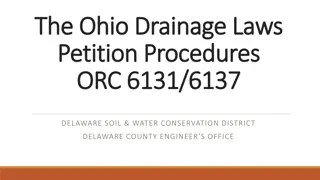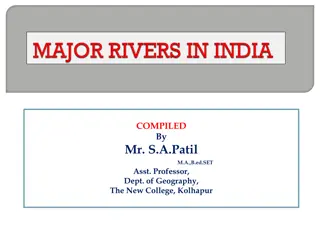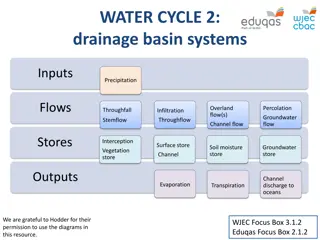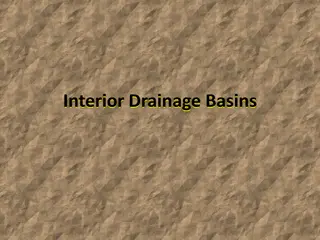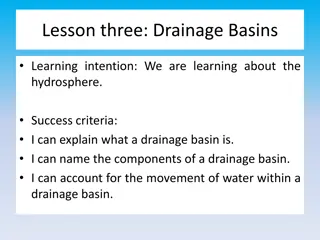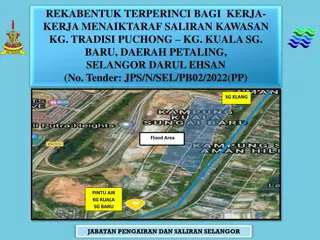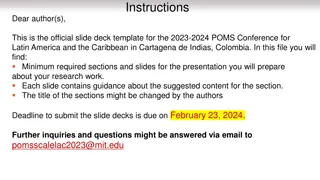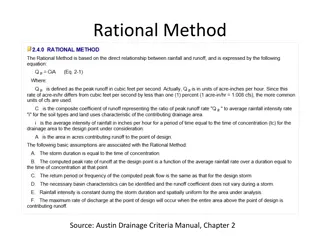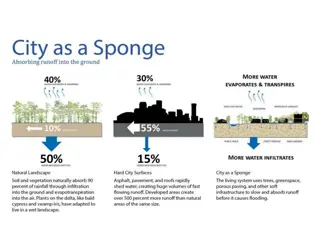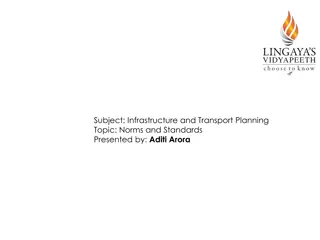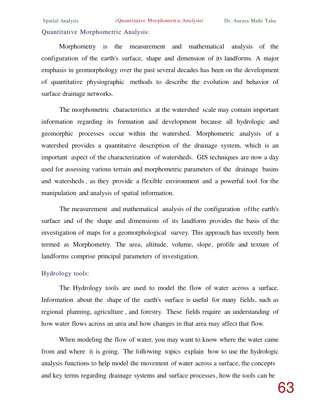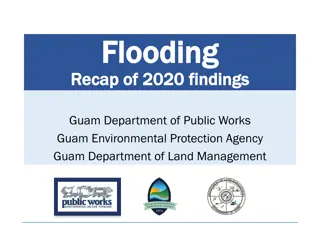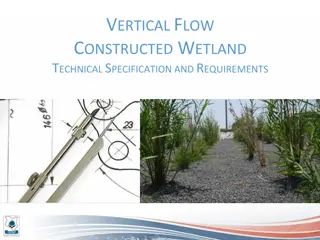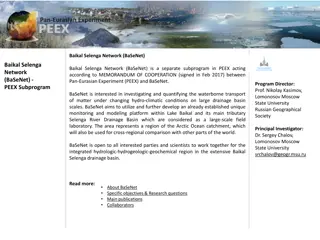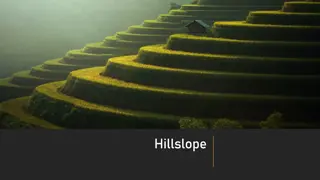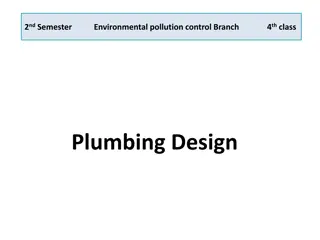Exploring India's Drainage System: A Detailed Study
Delve into the intricate drainage system of India with Guest Lecturer S. Maheswari. Learn about the Eastward and Westward flowing rivers, including major ones like Mahanathi, Brahmani, Narmadha, and Tapti. Discover the distinct characteristics of Himalayan and Peninsular rivers, comparing their origins, sizes, flow patterns, and erosional features. A rich visual journey awaits as you explore the diverse river systems shaping India's geography.
Uploaded on Oct 07, 2024 | 0 Views
Download Presentation

Please find below an Image/Link to download the presentation.
The content on the website is provided AS IS for your information and personal use only. It may not be sold, licensed, or shared on other websites without obtaining consent from the author. Download presentation by click this link. If you encounter any issues during the download, it is possible that the publisher has removed the file from their server.
E N D
Presentation Transcript
S. MAHESWARI GUEST LECTURER IN GEOGRAPHY GCW(A)K GEOGRAPHY OF INDIA TOPIC: DRAINAGE SYSTEM IN INDIA 08.08.2020 [PART 2]
PENINSULAR RIVERS 1.EAST WARD RIVERS 2.WEST WARD RIVERS
EAST WARD FLOWING RIVERS FOLLOWING IN THE MAIN RIVERS OF EAST WARD FLOWING: The Mahanathi The Brahmani The Subernarekha The Godavari The Krishna The Pennar The Kaveri The Tambraparni
WESTWARD FLOWING RIVER Following is the main rivers of eastward flowing: The Narmadha The Tapti The Sabarmati The Luni The Mahi
COMPARISON BETWEEN HIMALAYAN AND PENINSULAR RIVERS HIMALAYAN RIVERS PENIMSULAR RIVERS These rivers originate from the Himalayan mountain ramges. They are longer and larger than the peninsular rivers. They have larger basins and catchment area. The bedrocks of these rivers are soft, sedimentary and easily erodible. They are perennial in nature, flow throughout the year. These river originate from the peninsular plateaus in India. They are comparatively smaller and shorter than the Himalayan rivers. They have smaller basins and catchment areas. The bedrocks of these rivers are hard and not easily erodible. They are seasonal and non-pernnial so may not flow throughout the year.
HIMALAYAN RIVERS PENINSULAR RIVERS They are fed only rains. They form U-shaped valleys. They may not form meanders. They form small rivers and estuaries. They are consequent rivers i.e. They flow in the direction of the slope They are fed by the meltwater from glaciers and rains. They form V-shaped valleys. They form meanders. They form big deltas at their mouths where they meet the sea. They are antecedent rivers, i.e. They maintain tjeir original course and pattern in spite of the changes in the rock topography.


